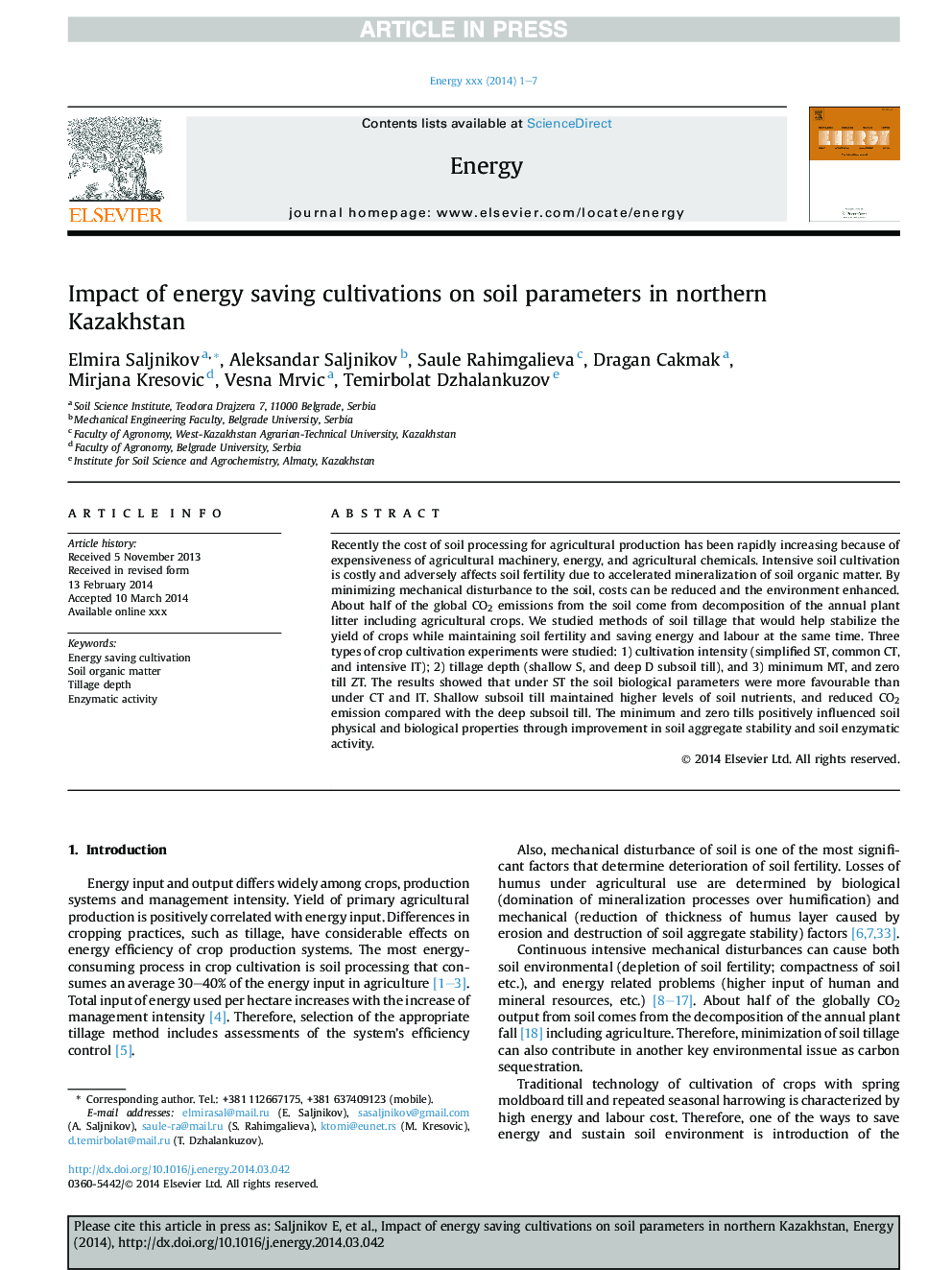| Article ID | Journal | Published Year | Pages | File Type |
|---|---|---|---|---|
| 8076279 | Energy | 2014 | 7 Pages |
Abstract
Recently the cost of soil processing for agricultural production has been rapidly increasing because of expensiveness of agricultural machinery, energy, and agricultural chemicals. Intensive soil cultivation is costly and adversely affects soil fertility due to accelerated mineralization of soil organic matter. By minimizing mechanical disturbance to the soil, costs can be reduced and the environment enhanced. About half of the global CO2 emissions from the soil come from decomposition of the annual plant litter including agricultural crops. We studied methods of soil tillage that would help stabilize the yield of crops while maintaining soil fertility and saving energy and labour at the same time. Three types of crop cultivation experiments were studied: 1) cultivation intensity (simplified ST, common CT, and intensive IT); 2) tillage depth (shallow S, and deep D subsoil till), and 3) minimum MT, and zero till ZT. The results showed that under ST the soil biological parameters were more favourable than under CT and IT. Shallow subsoil till maintained higher levels of soil nutrients, and reduced CO2 emission compared with the deep subsoil till. The minimum and zero tills positively influenced soil physical and biological properties through improvement in soil aggregate stability and soil enzymatic activity.
Related Topics
Physical Sciences and Engineering
Energy
Energy (General)
Authors
Elmira Saljnikov, Aleksandar Saljnikov, Saule Rahimgalieva, Dragan Cakmak, Mirjana Kresovic, Vesna Mrvic, Temirbolat Dzhalankuzov,
